Argentina 1935-51 Definitives
- Paolo Angelini (paoloang)
- Messaggi: 887
- Iscritto il: 13 luglio 2007, 11:54
Re: Argentina 1935-51 Definitives
Thanks a lot Rubiera. Sounds interesting.
Paolo Angelini
Colleziono Annulli a targhetta VISITATE L'ITALIA
Colleziono Annulli a targhetta VISITATE L'ITALIA
Re: Argentina 1935-51 Definitives
You are welcome! Thanks for looking at this material.
rubiera
rubiera
a plate variety of the 50c
This one is on the first plate, and this specimen is on the 1E1, the first paper, of 1936.


The 14 types of the 50c
Here they are, from 1,400 used specimens. Scott has three types... Watch out for the 1L5, it is super rare!
1E1, issued January 1936.

1E2, from 1937

1E3, from 1939 to 1944

1E4, from 1940

1E5, from 1943/44, rare, small RA

NGR, from 1945

NOP, unwatermarked opaque from 1947/48

2C, Straight Rays from 1949

CL2, clay from 1952

1L1, from 1951, deep orange background

1L2, from 1952, pale red, medium to gigantic RA, poorly defined

1L3, from 1955/56, bright white paper and deep yellow background

1L4, similar to 1L2, with a partially visible watermark
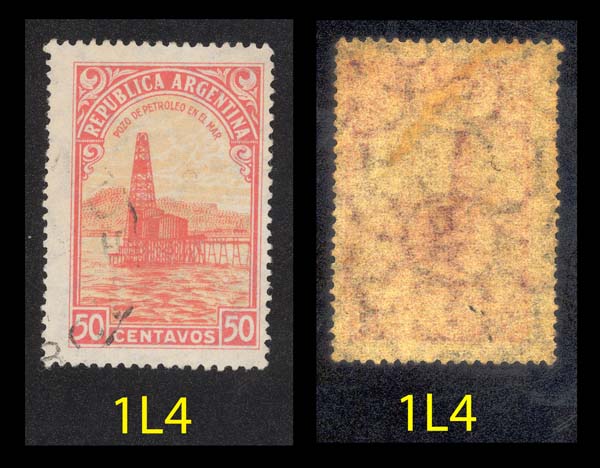
1L5, similar to 1L2, white Zarate, rare

I have these in a Picasa web album here:
http://www.somestamps.com/domain-argent ... 069-4.html
1E1, issued January 1936.

1E2, from 1937

1E3, from 1939 to 1944

1E4, from 1940

1E5, from 1943/44, rare, small RA

NGR, from 1945

NOP, unwatermarked opaque from 1947/48

2C, Straight Rays from 1949

CL2, clay from 1952

1L1, from 1951, deep orange background

1L2, from 1952, pale red, medium to gigantic RA, poorly defined

1L3, from 1955/56, bright white paper and deep yellow background

1L4, similar to 1L2, with a partially visible watermark

1L5, similar to 1L2, white Zarate, rare

I have these in a Picasa web album here:
http://www.somestamps.com/domain-argent ... 069-4.html
a few plate varieties of the 50c
The ones mentioned here are for the plate used beginning in 1949. The variety with the V of CENTAVOS deformed is likely found more than once on the plate, judging by how common it is. The variety with the outer line upper left corner clipped is repetitive since I find more than one on the same block. This strip also shows the variety with a dot after MAR.

first stamp left to right

third stamp left to right

What makes me think that a new plate was introduced in 1949 is that the issues from that year, the 2C or Straight Rays, share plate varieties with the later issues, and the issues from 1948, on the unwatermarked opaque paper (NOP) and before do not.
Here is a 2C with the variety with the outer line upper left corner clipped

detail

Here is a variety I found several years ago as well as in the large lot I have been exmining lately. I only find it on the 1L3 from 1955, the printing with a bright yellow background.



first stamp left to right

third stamp left to right

What makes me think that a new plate was introduced in 1949 is that the issues from that year, the 2C or Straight Rays, share plate varieties with the later issues, and the issues from 1948, on the unwatermarked opaque paper (NOP) and before do not.
Here is a 2C with the variety with the outer line upper left corner clipped

detail

Here is a variety I found several years ago as well as in the large lot I have been exmining lately. I only find it on the 1L3 from 1955, the printing with a bright yellow background.


Back to the postmarks
Returning to this topic, here are the three pages I currently have:
Buenos Aires
http://www.somestamps.com/domain-argentina/arg193551/postmarks/buenos-aires/argentina-1935-51-postmarks-Buenos-Aires-Numerals.html
Type I, the old format and mostly phased out during 1936
http://www.somestamps.com/domain-argentina/arg193551/postmarks/early/argentina-1935-51-postmarks-early.htm
Provincial Capitals
http://www.somestamps.com/domain-argentina/arg193551/postmarks/provincial-capitals/argentina-1935-51-postmarks-provinces-capitals.html
Buenos Aires
http://www.somestamps.com/domain-argentina/arg193551/postmarks/buenos-aires/argentina-1935-51-postmarks-Buenos-Aires-Numerals.html
Type I, the old format and mostly phased out during 1936
http://www.somestamps.com/domain-argentina/arg193551/postmarks/early/argentina-1935-51-postmarks-early.htm
Provincial Capitals
http://www.somestamps.com/domain-argentina/arg193551/postmarks/provincial-capitals/argentina-1935-51-postmarks-provinces-capitals.html
Re: Argentina 1935-51 Definitives
After ignoring this topic for a very long time (try 15 years), and receiving a Stanley Gibbons transparent strip to measure watermarks, I have made some measurements of the 10c Rivadavia Red:
Small, slightly irregular holes:
Type I horizontal.

Type I vertical as if it was 13.5, which it isn't.

Type I vertical measured correctly, looks like 13.1, and not 13.

Type II horizontal

Type II vertical

Medium, regular holes:
Type II horizontal

Type II vertical

After these measurements, I now realize why I am unable to separate the two vertical perforations with the naked eye:
1. The 13 perforation is from the irregular grid with small holes, and the measurement is not exactly 13.5 or 13.
2. The difference between 13.1 and 13.4 is VERY small.
I wonder if the other stamps from the first batch (October 1, 1935) are also found with the 'almost 13' vertical perforation?
Small, slightly irregular holes:
Type I horizontal.

Type I vertical as if it was 13.5, which it isn't.

Type I vertical measured correctly, looks like 13.1, and not 13.

Type II horizontal

Type II vertical

Medium, regular holes:
Type II horizontal

Type II vertical

After these measurements, I now realize why I am unable to separate the two vertical perforations with the naked eye:
1. The 13 perforation is from the irregular grid with small holes, and the measurement is not exactly 13.5 or 13.
2. The difference between 13.1 and 13.4 is VERY small.
I wonder if the other stamps from the first batch (October 1, 1935) are also found with the 'almost 13' vertical perforation?
Re: Argentina 1935-51 Definitives
I find the following after looking at some 5c lithograped:
The perforation comb used during the first printing, from October 1, 1935; with small and irregular holes, result in variables measurements of the vertical perforation between 13.1 and 13.4. I only find one vertical row with 13.1 perforation, and it is a row with a skipped perf hole. Here I show three illustrative blocks.
The first block is from the row with a perf skip, perforation 13.15, and it should be the same row as that for the 10c Rivadavia Red type I block shown previously.


The second block measures 13.3

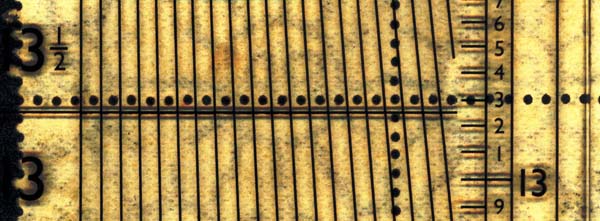
The third block measures 13.4
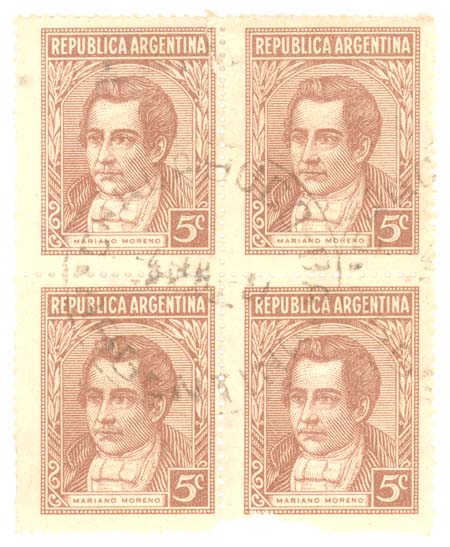

Judging by the rare frequency with which I find the 13.1 perforation, I am guessing that it is only found in one column of the sheet. All of the 5c lithographed (5c1E1) look like they were perforated with this comb; and not with the later comb that measures exactly 13.5 by 13.5.
The perforation comb used during the first printing, from October 1, 1935; with small and irregular holes, result in variables measurements of the vertical perforation between 13.1 and 13.4. I only find one vertical row with 13.1 perforation, and it is a row with a skipped perf hole. Here I show three illustrative blocks.
The first block is from the row with a perf skip, perforation 13.15, and it should be the same row as that for the 10c Rivadavia Red type I block shown previously.


The second block measures 13.3


The third block measures 13.4


Judging by the rare frequency with which I find the 13.1 perforation, I am guessing that it is only found in one column of the sheet. All of the 5c lithographed (5c1E1) look like they were perforated with this comb; and not with the later comb that measures exactly 13.5 by 13.5.
Re: Argentina 1935-51 Definitives
Printing press used to print these definitives
The caption reads:
"Two color typographic rotary press 'Goebel' model B.P.M. used by the Mint (Casa de la Moneda) to print postal stamps. It was acquired in 1935, even if installed in its printing shop (taller) since November 1930 in test mode (a titulo de ensayo)."

The caption reads:
"Two color typographic rotary press 'Goebel' model B.P.M. used by the Mint (Casa de la Moneda) to print postal stamps. It was acquired in 1935, even if installed in its printing shop (taller) since November 1930 in test mode (a titulo de ensayo)."

Re: Argentina 1935-51 Definitives
Measurement of the 1E1 grid
As explained by Rein (member of Stampboards), the direction along which the ellipses are longest in this paper is the direction in which the roll was made. Here are two examples. I find the grid aligned in the horizontal direction in reference to the RA. If the grid was found running along the perpendicular direction, that would constitute a separate watermark.
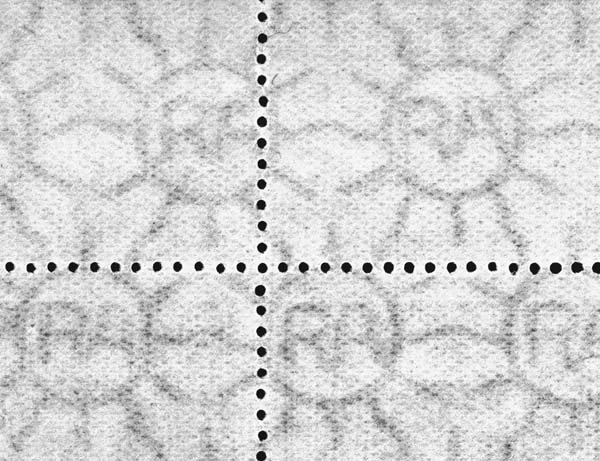
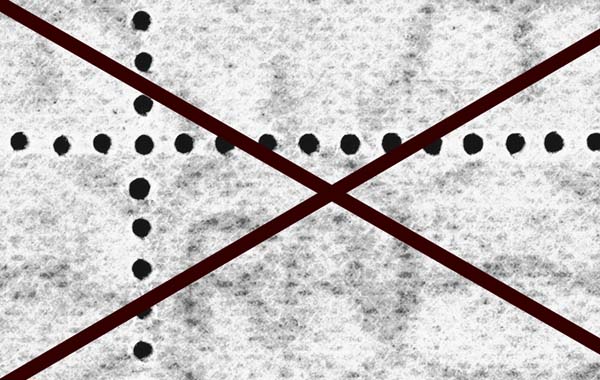
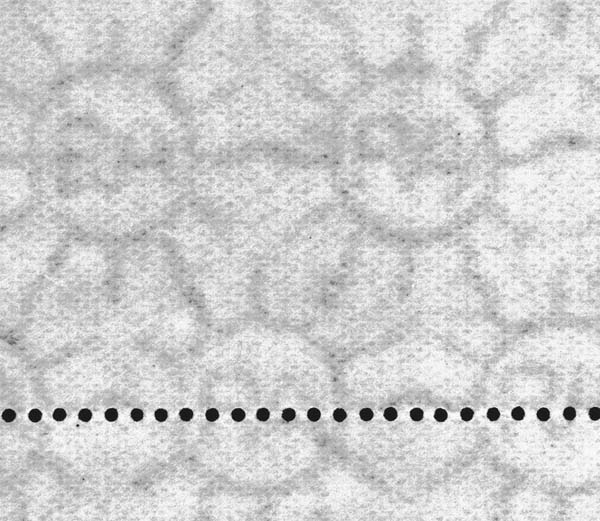
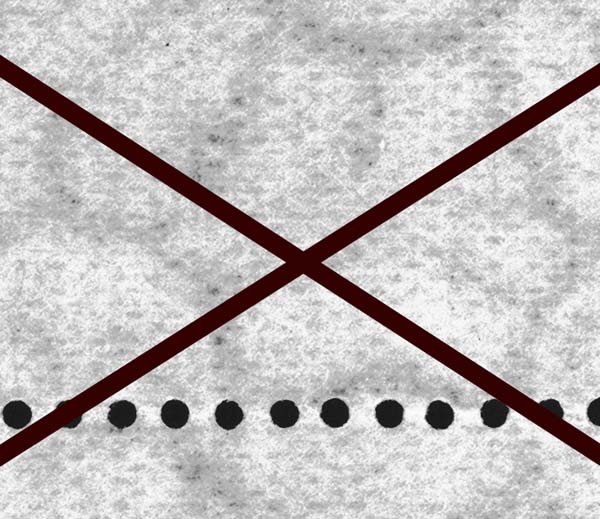
As explained by Rein (member of Stampboards), the direction along which the ellipses are longest in this paper is the direction in which the roll was made. Here are two examples. I find the grid aligned in the horizontal direction in reference to the RA. If the grid was found running along the perpendicular direction, that would constitute a separate watermark.




Re: Argentina 1935-51 Definitives
A scan of the 1E2 paper
I do not find a clear grid for this paper.
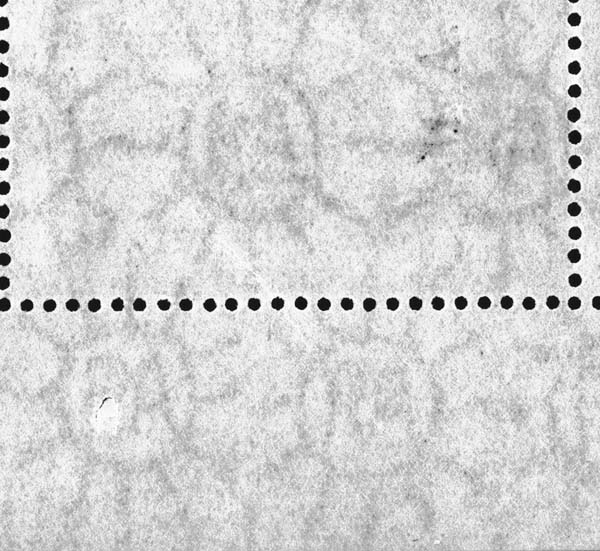
I do not find a clear grid for this paper.

Re: Argentina 1935-51 Definitives
Measurement of the 1E3 grid
Here are two examples. I am not able to determine a direction for this roll based on the elongation of the dots.
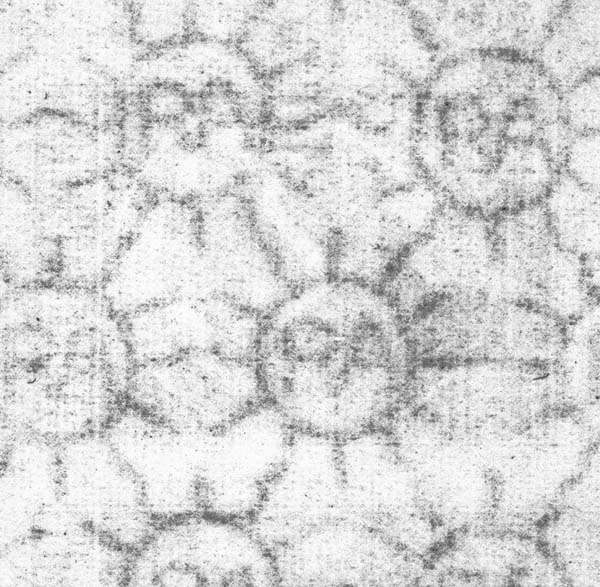
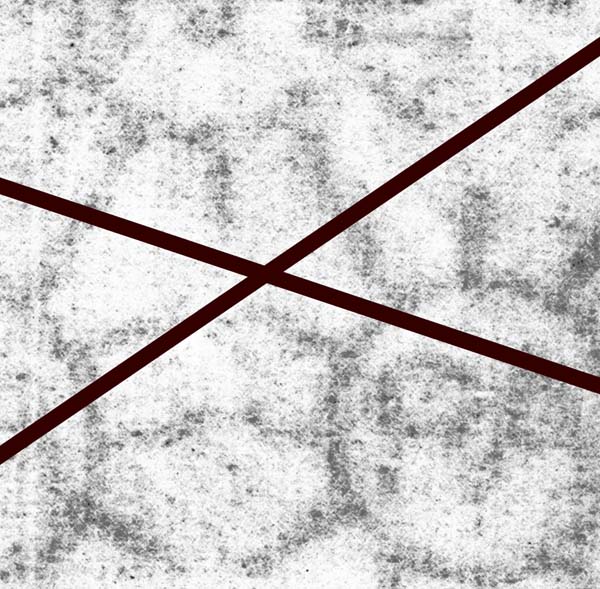
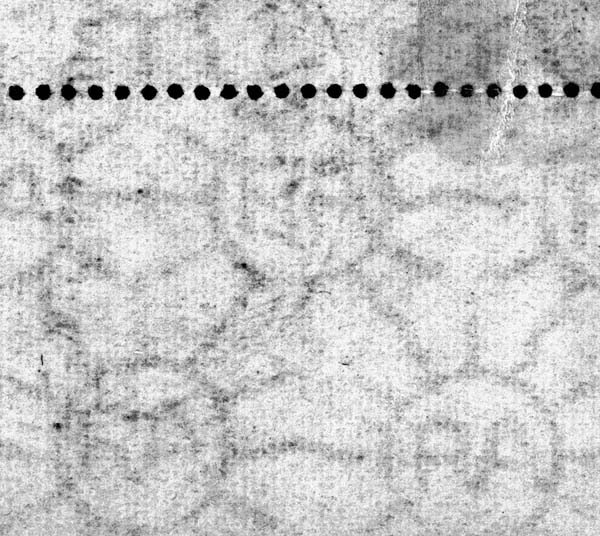
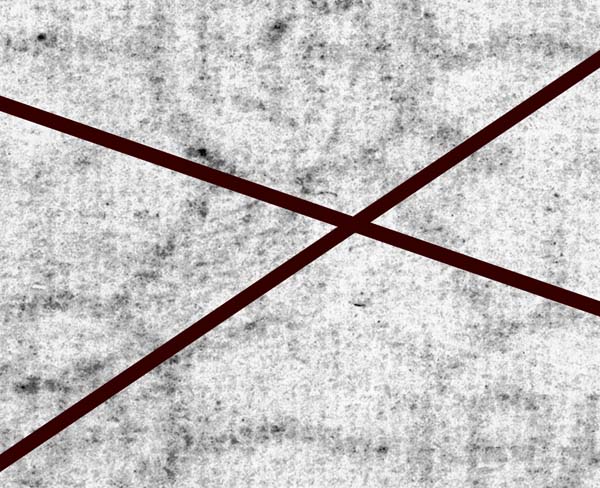
The watermark can sometimes be somewhat unclear for the 1E3 paper.
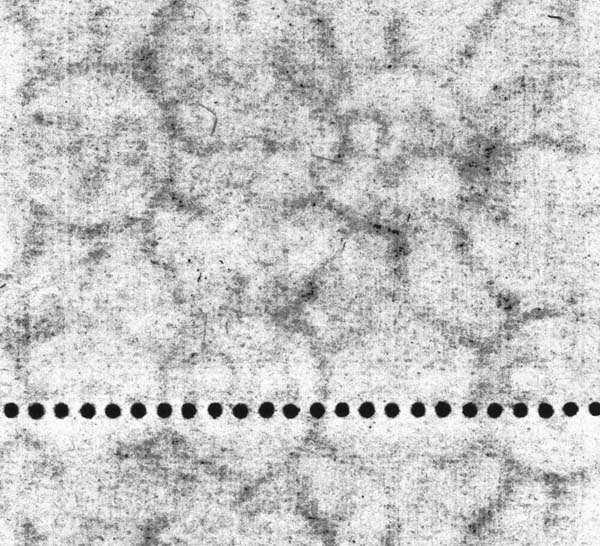
Here are two examples. I am not able to determine a direction for this roll based on the elongation of the dots.




The watermark can sometimes be somewhat unclear for the 1E3 paper.

Re: Argentina 1935-51 Definitives
Measurement of the 1E4 grid
Here are several examples. I am not able to determine a direction for this roll based on the elongation of the dots.
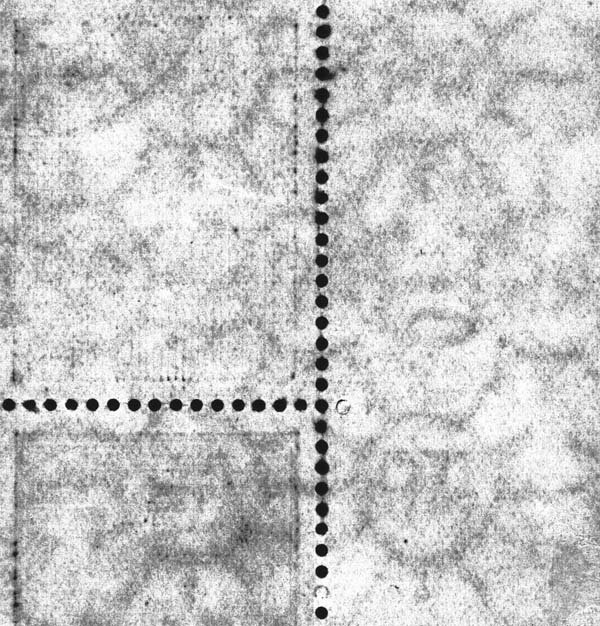
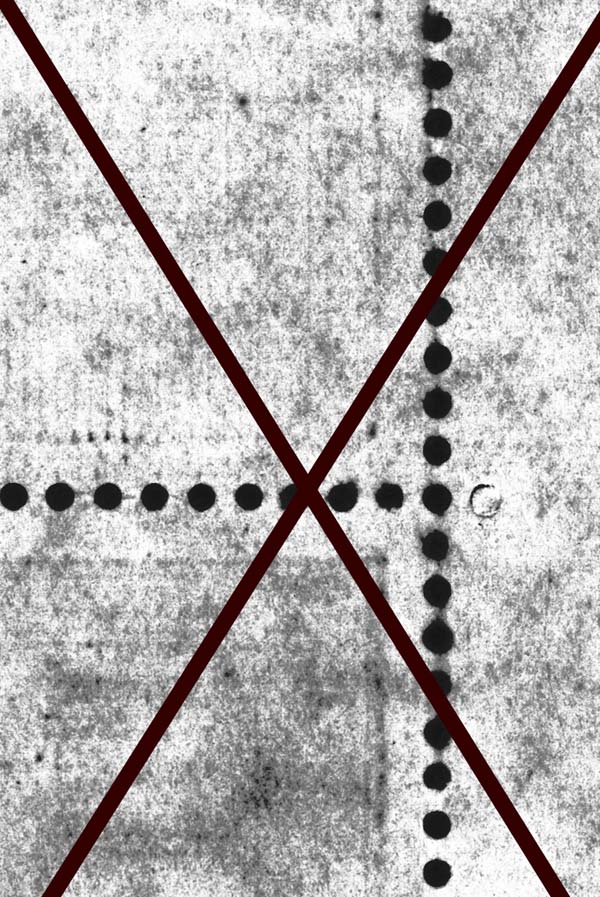
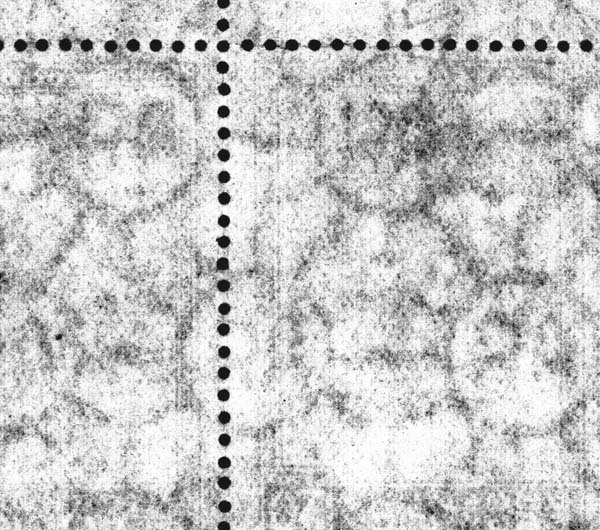
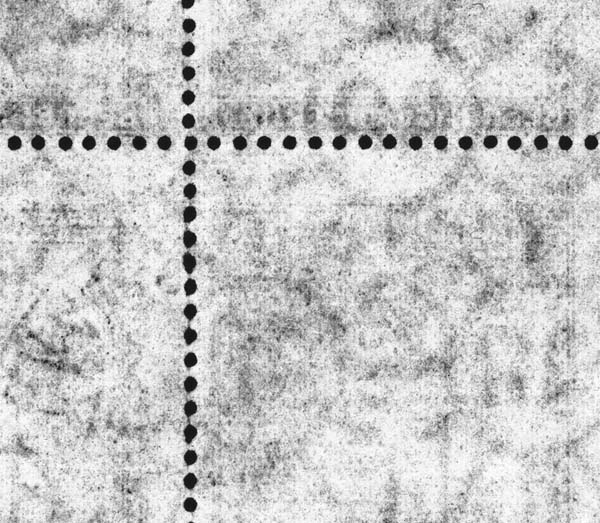
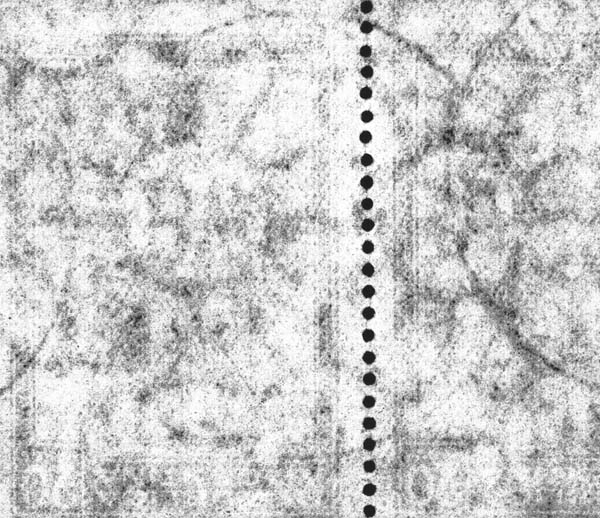
Here are several examples. I am not able to determine a direction for this roll based on the elongation of the dots.





Re: Argentina 1935-51 Definitives
2C and 2D examples showing the watermark
These are 2C examples (diffuse, grayish paper).
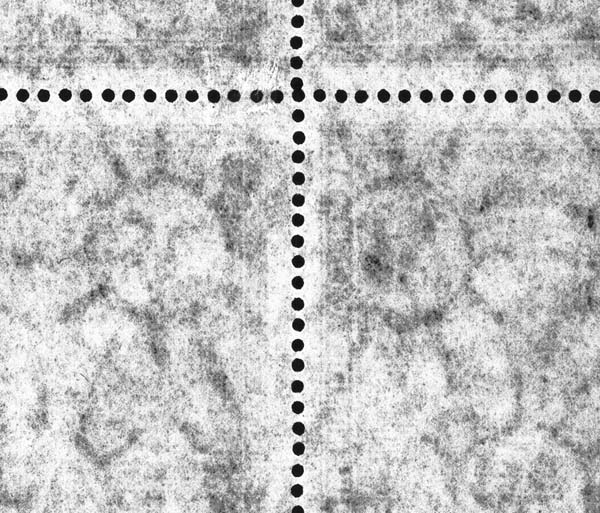
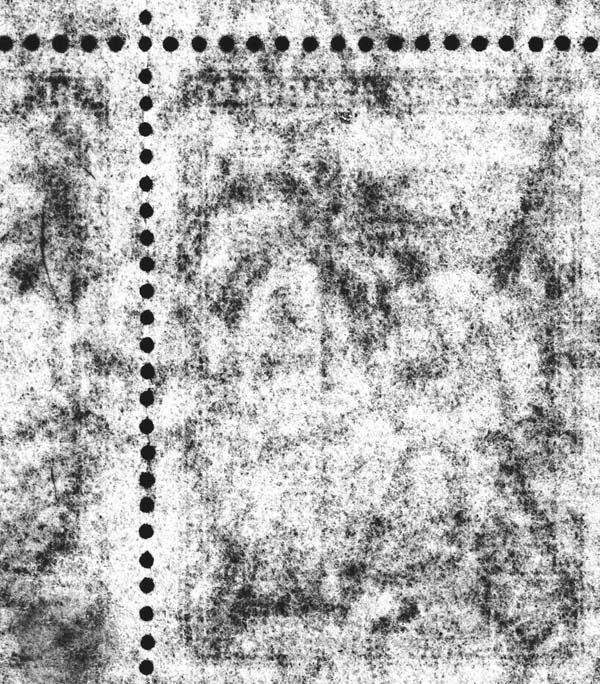
There are 2D examples (clear, bright white paper).

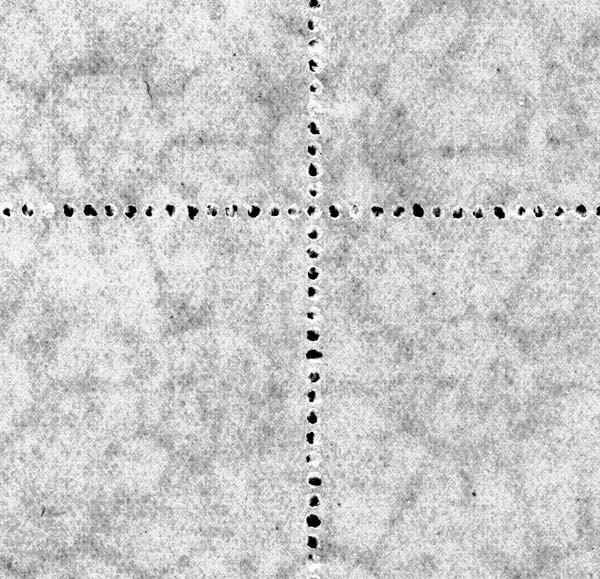
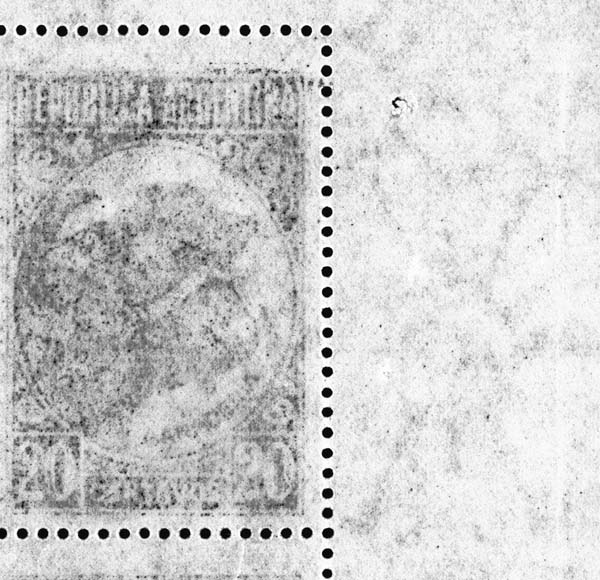
These are 2C examples (diffuse, grayish paper).


There are 2D examples (clear, bright white paper).



Re: Argentina 1935-51 Definitives
Picasa web albums of the 1E and Straight Rays papers
I have loaded these to somestamps at:
http://www.somestamps.com/domain-argentina/arg193551/reference-collection/foro/051-100/argentina-1935-51-foro-072-4.html
I have loaded these to somestamps at:
http://www.somestamps.com/domain-argentina/arg193551/reference-collection/foro/051-100/argentina-1935-51-foro-072-4.html
Re: Argentina 1935-51 Definitives
Some comments on categorizing the papers
Following up on Rein's (member of Stampboards) comments, I have the following comments:
1. The assumption that there is a Wavy Rays watermark and a Straight Rays watermark is questionable. I use these two references only to simplify the subject. In reality, most of the watermarked papers have a unique watermark. The exception is the watermark shared by the 1E1, 1E3, and 1L1 papers.
2. Even though I originally labeled the 1E and 1L papers to mean that the 1 referred to Wavy Rays, it is more reasonable to use the 1 as a category number, and not as a reference to the type of watermark. By this I mean that the 1E papers are in a category of 5 papers with 4 distinctly different watermarks, and the 1L papers are in a category with 5 papers each with a unique watermark.
3. The paper has three characteristics: (a) the consistency and color of the pulp, be it opaque, white, gray; (2) the watermark as defined by its dimensions; (3) the grid, when discernible, and the relative angles of the rows of dots or ellipses, when discernible.
4. The vertical and horizontal versions of some of the watermarks should be from rolls of paper that were manufactured differently. It may be determined in the future that the two types are two separate watermarks.
Following up on Rein's (member of Stampboards) comments, I have the following comments:
1. The assumption that there is a Wavy Rays watermark and a Straight Rays watermark is questionable. I use these two references only to simplify the subject. In reality, most of the watermarked papers have a unique watermark. The exception is the watermark shared by the 1E1, 1E3, and 1L1 papers.
2. Even though I originally labeled the 1E and 1L papers to mean that the 1 referred to Wavy Rays, it is more reasonable to use the 1 as a category number, and not as a reference to the type of watermark. By this I mean that the 1E papers are in a category of 5 papers with 4 distinctly different watermarks, and the 1L papers are in a category with 5 papers each with a unique watermark.
3. The paper has three characteristics: (a) the consistency and color of the pulp, be it opaque, white, gray; (2) the watermark as defined by its dimensions; (3) the grid, when discernible, and the relative angles of the rows of dots or ellipses, when discernible.
4. The vertical and horizontal versions of some of the watermarks should be from rolls of paper that were manufactured differently. It may be determined in the future that the two types are two separate watermarks.
Re: Argentina 1935-51 Definitives
Deluca mentions some key information about the 20cJMG/20cMG and the 1pL/1P.
According to Deluca:
1. 10,000,000 of the 20cJMG were printed, and 2,495,551 were destroyed when the 20cMG was introduced November 21, 1936, the latter with an initial printing of 5,000,000.
3. 3,000,000 of the 1pL were printed, and 700,000 were destroyed when the 1p was issued February 1, 1937.
4. 407 specimens each of the 20cMG and the 1p were overprinted 'MUESTRA' and sent to the U.P.U.
Here are the quantities Deluca mentions were delivered for the DEPOF issues of the 20cJMG and the 1pL:

Here are the dates of issue mentioned by Deluca for the 20cMG and the 1p DEPOFs.

Also mentioned in Deluca is that a total of 60.030.317 DEPOF were delivered in 1936. Judging by the stamps I have, most of these were 5c, 10c, and 30c.
According to Deluca:
1. 10,000,000 of the 20cJMG were printed, and 2,495,551 were destroyed when the 20cMG was introduced November 21, 1936, the latter with an initial printing of 5,000,000.
3. 3,000,000 of the 1pL were printed, and 700,000 were destroyed when the 1p was issued February 1, 1937.
4. 407 specimens each of the 20cMG and the 1p were overprinted 'MUESTRA' and sent to the U.P.U.
Here are the quantities Deluca mentions were delivered for the DEPOF issues of the 20cJMG and the 1pL:

Here are the dates of issue mentioned by Deluca for the 20cMG and the 1p DEPOFs.

Also mentioned in Deluca is that a total of 60.030.317 DEPOF were delivered in 1936. Judging by the stamps I have, most of these were 5c, 10c, and 30c.
Re: Argentina 1935-51 Definitives
1E1 'Servicio Oficial'
The stamps issued on this paper with the 'Servicio Oficial' overprint are all small format:
1. 3c San Martin Green

2. 5c Moreno typographed

3. 10c Rivadavia Red Type II

4. 15c Small Format Cattle Dark Blue

The stamps issued on this paper with the 'Servicio Oficial' overprint are all small format:
1. 3c San Martin Green

2. 5c Moreno typographed

3. 10c Rivadavia Red Type II

4. 15c Small Format Cattle Dark Blue

Re: Argentina 1935-51 Definitives
1E2 'Servicio Oficial'
The stamps issued on this paper with the 'Servicio Oficial' overprint are all large format:
Here are two used specimens. I find these stamps used between 1938 and 1943. These stamps were used infrequently over a long period of time. This usage is in contrast to the regular issue 1E2 stamp, which was exhausted quickly in 1937.


Here is the back of a pair of the 25c.

Here is a mint block of the 50c1E2-SO. This stamp is very rare used.


Here is a single of the 1p1E2-SO, a rare stamp mint or used.


The stamps issued on this paper with the 'Servicio Oficial' overprint are all large format:
Here are two used specimens. I find these stamps used between 1938 and 1943. These stamps were used infrequently over a long period of time. This usage is in contrast to the regular issue 1E2 stamp, which was exhausted quickly in 1937.


Here is the back of a pair of the 25c.

Here is a mint block of the 50c1E2-SO. This stamp is very rare used.


Here is a single of the 1p1E2-SO, a rare stamp mint or used.


Re: Argentina 1935-51 Definitives
The NGR 'Servicio Oficial' high values
This selection shows a mint block of six of the 5 pesos and an used single of the 10 pesos. These stamps are considerably more common mint than used. The mint specimens are remainders since, according to Deluca, it was illegal to allow the mint stamps out of Argentinean government control. Luckily, these stamps are not valuable enough to get forgers interested in forging the postmark.
This block has an interesting plate variety.

The first stamp in the first row has a scratch in the field near the palm.
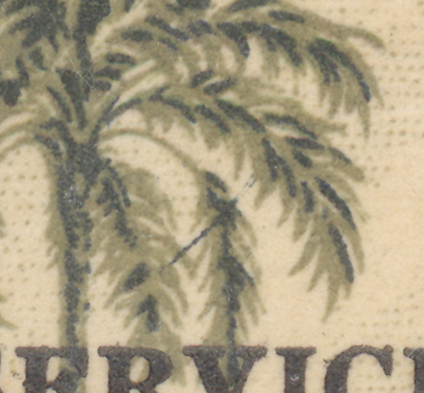
This used specimen is considerably scarcer than a mint specimen.

This selection shows a mint block of six of the 5 pesos and an used single of the 10 pesos. These stamps are considerably more common mint than used. The mint specimens are remainders since, according to Deluca, it was illegal to allow the mint stamps out of Argentinean government control. Luckily, these stamps are not valuable enough to get forgers interested in forging the postmark.
This block has an interesting plate variety.

The first stamp in the first row has a scratch in the field near the palm.

This used specimen is considerably scarcer than a mint specimen.
